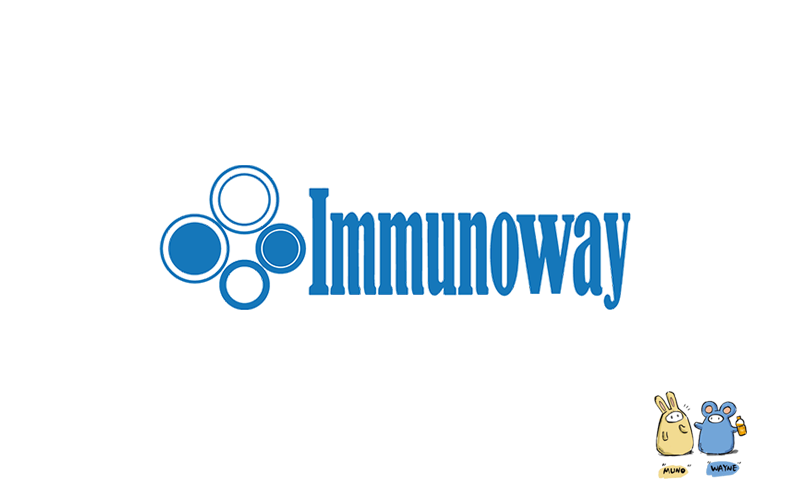
Catalog: YC0033
Size
Price
Status
Qty.
200μL
$450.00
In stock
0
100μL
$280.00
In stock
0
40μL
$150.00
In stock
0
Add to cart


Collected


Collect
Main Information
Target
Caspase-7
Host Species
Rabbit
Reactivity
Human, Mouse
Applications
WB, ELISA
MW
20kD (Observed)
Conjugate/Modification
Unmodified
Detailed Information
Recommended Dilution Ratio
WB 1:500-1:2000; ELISA 1:40000; Not yet tested in other applications.
Formulation
Liquid in PBS containing 50% glycerol, 0.5% BSA and 0.02% sodium azide.
Specificity
Cleaved-Caspase-7 p20 (D198) Polyclonal Antibody detects endogenous levels of fragment of activated Caspase-7 p20 protein resulting from cleavage adjacent to D198.
Purification
The antibody was affinity-purified from rabbit antiserum by affinity-chromatography using epitope-specific immunogen.
Storage
-15°C to -25°C/1 year(Do not lower than -25°C)
Concentration
1 mg/ml
MW(Observed)
20kD
Modification
Unmodified
Clonality
Polyclonal
Isotype
IgG
Related Products
Antigen&Target Information
Immunogen:
The antiserum was produced against synthesized peptide derived from human Caspase 7. AA range:149-198
show all
Specificity:
Cleaved-Caspase-7 p20 (D198) Polyclonal Antibody detects endogenous levels of fragment of activated Caspase-7 p20 protein resulting from cleavage adjacent to D198.
show all
Gene Name:
CASP7
show all
Protein Name:
Caspase7
show all
Other Name:
CASP7 ;
MCH3 ;
Caspase-7 ;
CASP-7 ;
Apoptotic protease Mch-3 ;
CMH-1 ;
ICE-like apoptotic protease 3 ;
ICE-LAP3
MCH3 ;
Caspase-7 ;
CASP-7 ;
Apoptotic protease Mch-3 ;
CMH-1 ;
ICE-like apoptotic protease 3 ;
ICE-LAP3
show all
Background:
This gene encodes a member of the cysteine-aspartic acid protease (caspase) family. Sequential activation of caspases plays a central role in the execution-phase of cell apoptosis. Caspases exist as inactive proenzymes which undergo proteolytic processing at conserved aspartic residues to produce two subunits, large and small, that dimerize to form the active enzyme. The precursor of the encoded protein is cleaved by caspase 3 and 10, is activated upon cell death stimuli and induces apoptosis. Alternatively spliced transcript variants encoding multiple isoforms have been observed for this gene. [provided by RefSeq, May 2012],
show all
Function:
Catalytic activity:Strict requirement for an Asp residue at position P1 and has a preferred cleavage sequence of Asp-Glu-Val-Asp-|-.,enzyme regulation:Inhibited by isatin sulfonamides.,Function:Involved in the activation cascade of caspases responsible for apoptosis execution. Cleaves and activates sterol regulatory element binding proteins (SREBPs). Proteolytically cleaves poly(ADP-ribose) polymerase (PARP) at a '216-Asp-|-Gly-217' bond. Overexpression promotes programmed cell death.,PTM:Cleavages by granzyme B or caspase-10 generate the two active subunits. Propeptide domains can also be cleaved efficiently by caspase-3. Active heterodimers between the small subunit of caspase-7 and the large subunit of caspase-3, and vice versa, also occur.,similarity:Belongs to the peptidase C14A family.,subunit:Heterotetramer that consists of two anti-parallel arranged heterodimers, each one formed by a 20 kDa (p20) and a 11 kDa (p11) subunit.,tissue specificity:Highly expressed in lung, skeletal muscle, liver, kidney, spleen and heart, and moderately in testis. No expression in the brain.,
show all
Cellular Localization:
Cytoplasm.
show all
Tissue Expression:
Highly expressed in lung, skeletal muscle, liver, kidney, spleen and heart, and moderately in testis. No expression in the brain.
show all
Research Areas:
>>Apoptosis ;
>>Apoptosis - multiple species ;
>>TNF signaling pathway ;
>>Non-alcoholic fatty liver disease ;
>>Alzheimer disease ;
>>Pathways of neurodegeneration - multiple diseases ;
>>Pathogenic Escherichia coli infection ;
>>Salmonella infection ;
>>Pertussis ;
>>Legionellosis ;
>>Pathways in cancer ;
>>Lipid and atherosclerosis
>>Apoptosis - multiple species ;
>>TNF signaling pathway ;
>>Non-alcoholic fatty liver disease ;
>>Alzheimer disease ;
>>Pathways of neurodegeneration - multiple diseases ;
>>Pathogenic Escherichia coli infection ;
>>Salmonella infection ;
>>Pertussis ;
>>Legionellosis ;
>>Pathways in cancer ;
>>Lipid and atherosclerosis
show all
Signaling Pathway
Cellular Processes >> Cell growth and death >> Apoptosis
Cellular Processes >> Cell growth and death >> Apoptosis - multiple species
Organismal Systems >> Immune system >> Cytosolic DNA-sensing pathway
Human Diseases >> Cancer: overview >> Pathways in cancer
Human Diseases >> Neurodegenerative disease >> Alzheimer disease
Human Diseases >> Neurodegenerative disease >> Pathways of neurodegeneration - multiple diseases
Environmental Information Processing >> Signal transduction >> TNF signaling pathway
Reference Citation({{totalcount}})
Catalog: YC0033
Size
Price
Status
Qty.
200μL
$450.00
In stock
0
100μL
$280.00
In stock
0
40μL
$150.00
In stock
0
Add to cart


Collected


Collect
Recently Viewed Products
Clear allPRODUCTS
CUSTOMIZED
ABOUT US
Toggle night Mode
{{pinfoXq.title || ''}}
Catalog: {{pinfoXq.catalog || ''}}
Filter:
All
{{item.name}}
{{pinfo.title}}
-{{pinfo.catalog}}
Main Information
Target
{{pinfo.target}}
Reactivity
{{pinfo.react}}
Applications
{{pinfo.applicat}}
Conjugate/Modification
{{pinfo.coupling}}/{{pinfo.modific}}
MW (kDa)
{{pinfo.mwcalc}}
Host Species
{{pinfo.hostspec}}
Isotype
{{pinfo.isotype}}
Product {{index}}/{{pcount}}
Prev
Next
{{pvTitle}}
Scroll wheel zooms the picture
{{pvDescr}}




















